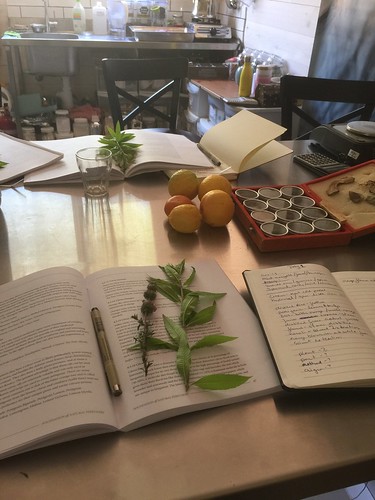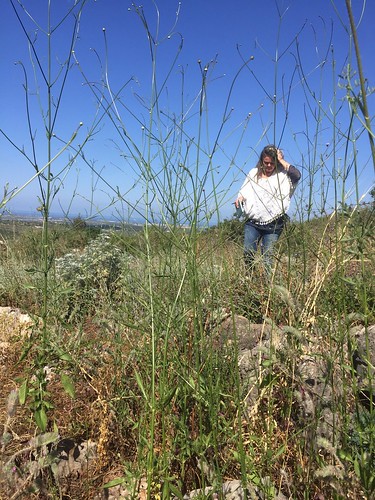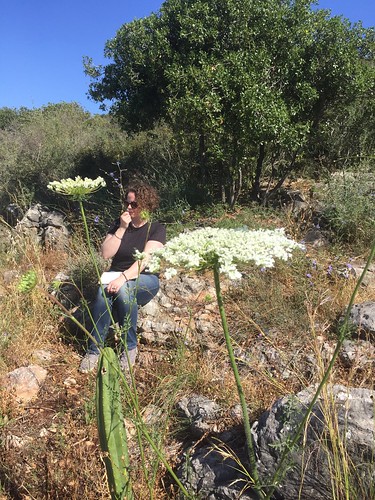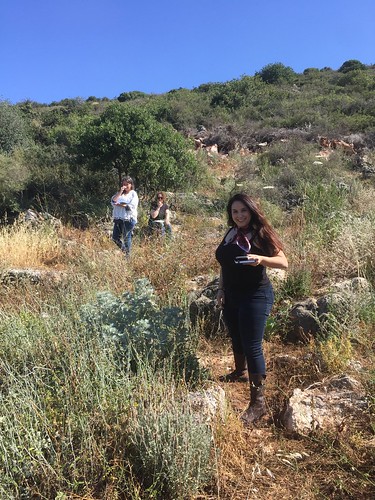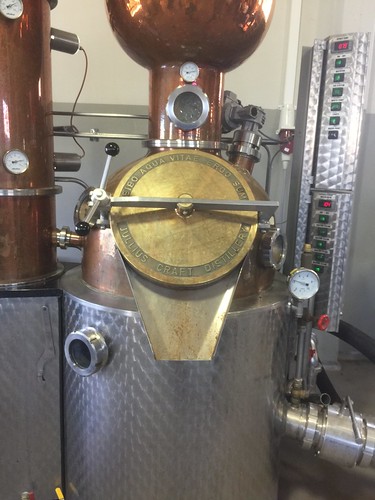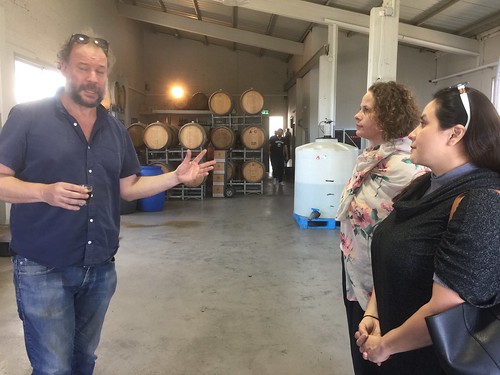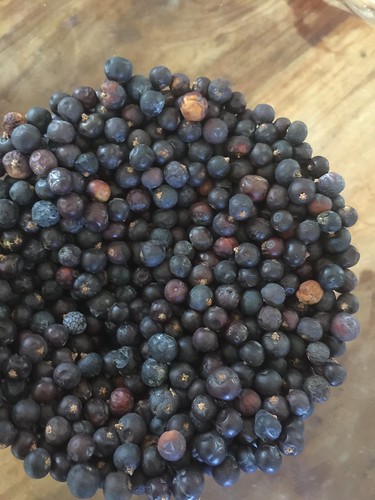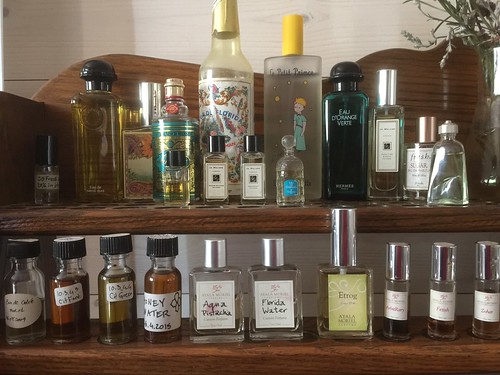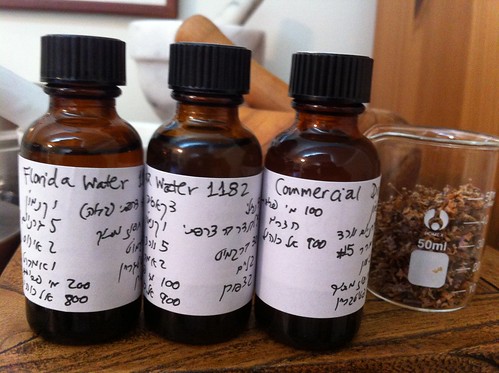Nose-to-Nose
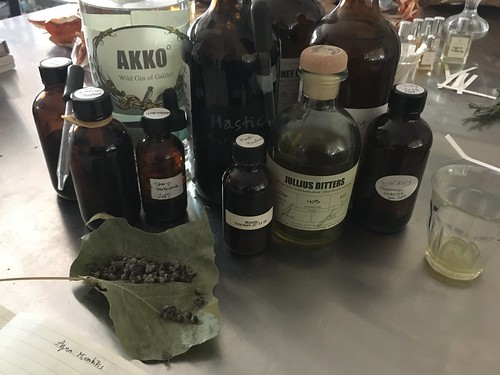
I don't usually mix alcohol and work (well, that's a lie! I alway mix alcohol in my work, I just don't drink it!). And last night was no exception, even though I had a the pleasure and the honour to entertain a very special guest at the studio: my dear colleague Yuval (Joov) Har-Gil, the master distiller of Julius Craft Distillery. We met several times at his distillery in Hanita, and every time I go there I end up high on just a few drops of his pure and delightful distillates from local fruit, honey and grape pomace. These he also infuses with wild botanicals that are indigenous to the region, and some other which are cultivated in the region, such as his many unusual fruit Eaux de Vie - alongside the more traditional spirits from apple, peach and apricot you'll find others that will blow your mind away, such as yuzu, carrots, cactus pear and even wild berries that few even know they are edible.
Although he is not formally a "Nose", every time we meet it is like meeting a colleague from the exact same field. And a master at that. Which is, needless to say - pure and sheer delight. Perhaps it is even more enriching because his knowledge complements mine. All the things I do not know - he does: Distillation process, history of alcohol and a lot of additional knowledge about the local plants and distilling the very fleeting esters of fruits into his Eaux de Vie. I have taken my students there for a class on distillation of citrus alcohol and even those who've visited countless distilleries as part of their profession, were blown away by his talent and craftsmanship.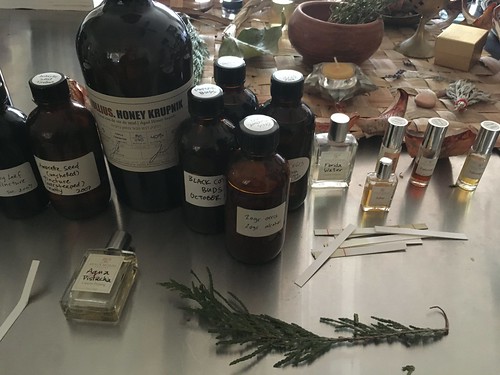
That night I think was the first time we met and actually had tea. Yerbamate, because I already know of his love for strong flavours such as tobacco. And as far as tea goes that's the next best thing.
We go through all the extracts I've ever made, which includes anything from wild plants from the Canadian rainforest, to Asian teas and spices (milky oolong and pandan leaf, anyone?), ambrette seed (a shared passion of ours), to the local treasures - oh so familiar and beloved: white mint, wormwood, varthemia, vitex... We both swoon.
We are meeting because we're scheming an event together for the Western Galilee Winter Festival: A regional celebration of our very own local culture, art cuisine, agriculture - it all comes together in a long weekend (Thursday through Saturday, sometime between Christmas and Chanukah - this year it will take place December 19-21, 2019). Our event will take place Thursday, December 19th, at Jullius Craft Distillery in Hanita.
We will return to the defining moment in history when the world of alchemy, magic and herbalism split into two different worlds and industries – the distillation of alcohol for the production of potable alcohol-based beverages; and the distillation of essential oils for concocting perfumes and toiletries.
The evening will be dedicated to discussing and showcasing our unique craftsmanship and demonstrate the connections and similarities between the craft of Eau de Cologne (light, citrus-and-herb based perfumes) and the craft of Eau de Vie (alcoholic beverage). We will also discover unusual aromatic plants, and delve into the process of perfumes and alcoholic beverages. One-of-a-kind and unique bitters and "Aqua Mirabillis" will be made for the event – and those you will of course take home with you.
And for that of course I had to get into the lab and concoct something special... So this morning, I've been working on creating an Eau de Cologne type of fragrance that is largely inspired by Jullius' fine and subtle Akko Gin. It deserves a post on its own because truly, how it is designed and crafted is no different than making perfume!
I will only say here that it is akin to shaking a branch of Cedar of Lebanon tree after it rained on Mount Meron, and savouring the aroma of mountain air, fresh rain, leaves and forest. It's dewy and spectacular. To turn this into a perfume and use only local and natural botanicals will be a great accomplishment and I can't say I have managed to do this today... I have used a very similar structure of my Aqua Pistachia, with added juniper berries to give it the characteristic gin fragrance, as well as angelica root and tinctures of a few local wild herbs. And I have also created another concoction, which is unique to what we'll taste that night: we have decided to use mostly local herbs, and focus on six: Mastic, vitex, micromeria fruticosa (white mint), tobacco and the last ingredient the idea was that I will be using varthemia and Joov will be using arbutus berries (called Medronho in Spanish), that he picked from Hanita forest, fermented and distilled into a spirit. They have a unique aroma which Joov noticed is similar to varthemia's unusual perfume!
I agonized over the Aqua Akko for a while, and then feel brave enough to tackle our brief: Make a perfume version of Joov's bitters, which I adore. They are delicately minty from Micromeria fruticosa, earthy from the local "Three-lobed" sage AKA Greek Sage (Salvia fruticosa) and slightly resinous-skunky from Elecampagne (Inula viscosa). I feel worried that it won't be a crowd pleaser (not even knowing what the "crowd" for our event will even be. Which is why I started with concocting the gin-like cologne to begin with. Some things just require time and patience. And right now I seem to have neither!


